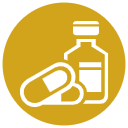Witnessing or experiencing a traumatic event can be very difficult. It can greatly affect your mental and emotional state. Feelings of intense sadness, anxiety, and fear can last for several days after the event.
For many people, these feelings will subside but sometimes they can last for a long time. This is PTSD, or Post-Traumatic Stress Disorder. Without PTSD treatment, these feelings can become worse over time.
About 15 million American adults experience PTSD every year. PTSD is different for everyone but women are more likely to suffer from it. About 8% of women receive a PTSD diagnosis compared to 4% of men.
If you, or someone you know, are facing this condition, you may be looking for answers. What is PTSD? What causes it? How to deal with PTSD? Keep reading to find all the answers to these common questions about PTSD.
Post-traumatic Stress Disorder, or PTSD as it’s commonly known, occurs after trauma. You may have been directly involved in the traumatic incident or witnessed it as an outsider.
Some people may even experience PTSD after a traumatic event happens to a loved one. PTSD can also occur in careers where traumatic incidents are common, such as with first responders.
Some examples of common traumatic incidents include:
Overall, women are more likely to experience abuse-related PTSD. This can include sexual assault or domestic violence. Men are more likely to experience an accident or violence-related PTSD. For example, trauma due to war or an accident.
PTSD often begins in childhood or adolescence. Over 60% of children report experiencing a traumatic incident before the age of 16. Abuse is the most common form of trauma for children. But other incidents such as neglect, bullying, and loss of a loved one are also prevalent.
PTSD does not consist of types, but of five sub-categories:
Additionally, Complex PTSD can occur but it is not currently part of the DSM-5. The DSM-5, or Diagnostic and Statistic Manual of Mental Disorders, is used to diagnose PTSD.
Complex PTSD occurs when many trauma incidents happen over a longer period. It can be more difficult and PTSD recovery may take longer.
This type of PTSD occurs after trauma but unlike the normal stress response, it does not subside. Symptoms last for long periods and begin within one month of the incident. CBT, or Cognitive Behavioral Therapy, is often used as a treatment.
This sub-category is described as symptoms of PTSD, without any coexisting disorder. Disorders such as depression or anxiety often coexist with PTSD. Since people with this type do not have comorbidities, they have a very high chance of PTSD recovery.
Dissociative PTSD centers around dissociation and detachment. This can include feeling detached from your body or environment. People who experience this can often feel like life isn’t real.
This sub-category of PTSD usually involves flashbacks to the traumatic event. Feelings and symptoms can also be more intense than other sub-categories.
The causes of PTSD vary but the key feature is that the stress response does not disappear. When exposed to stress, our bodies go into fight or flight mode. This means we either tackle the problem or remove ourselves from the situation.
Usually, our body is pretty good at assessing the situation and letting go of the stress response. That’s why when you experience something like a car accident, your stress response will eventually disappear.
People who experience PTSD remain in that fight or flight mode. The body is under constant stress, usually reliving the traumatic event. If the stress is not managed correctly, it can evolve into PTSD.
Every person experiences symptoms of PTSD in a different way. Some may have more intense symptoms, while others may feel less.
But there are some common symptoms that almost everyone with PTSD will experience. They may experience one or all of these symptoms.
After a traumatic event, small things can become big triggers. People with PTSD will often avoid activities, people, or locations that trigger them.
If someone experiences a traumatic car accident, for example, they may develop avoidance. They might fear driving or loud noises. They may also avoid the location of their accident.
Often, the fight or flight response will keep the body in a state of elevated anxiety. This makes it difficult to concentrate, fall asleep, or relax.
A person who experiences a violent assault in public may feel fearful of crowds. They might feel fearful of going out in public or even talking to people.
Negative emotions such as anger, sadness, or disgust are common symptoms. People may even feel guilty for witnessing or being involved in the event.
For example, the death of a loved one after a traumatic accident such as a car crash can trigger feelings of guilt. The survivor may question why it happened. They may feel guilty that they are alive while their loved one isn’t.
Flashbacks, or reliving memories, after trauma are very common in PTSD. Oftentimes, a trigger will bring on an unpleasant memory and a flashback will occur.
Many people re-live the experience through dreams or nightmares. For example, someone who experienced a horrific fire may dream about fire and heat. Or the flashback can occur whenever they smell smoke.
Treatment often focuses on “trauma-specific” or “trauma-informed care”. While they may sound similar, they have several differences. Trauma-specific care focuses on targeting the effects of the trauma. At its core, trauma-specific care aims to achieve healing. This can be done through several types of therapies.

Cognitive Processing Therapy focuses on changing the patient’s way of seeing a situation. It addresses negative thoughts and ideas related to the traumatic incident.

Prolonged exposure therapy is a common method for overcoming trauma. This type of therapy focuses on facing your trauma and moving away from avoidance. While this can be effective, it may also re-traumatize the patient.

Trauma-informed care is a more gentle approach that seeks to avoid re-traumatization. Instead, the focus is more on developing skills and habits to lessen the effects of the trauma.
Both types of treatment options can include medicine. In fact, most people with PTSD follow a treatment plan that includes both therapy and medicine. Medicine is usually prescribed to manage stress levels and emotional well-being.
These medicines may be SSRIs and/or SNRIs. Some people include both in their treatment plan, while others only need one.

SSRIs are selective serotonin reuptake inhibitors. While the name may sound intimidating, these are simply anti-depressants. They are used to regulate mood, which can help people with PTSD reduce negative emotions.

SNRIs are serotonin-norepinephrine reuptake inhibitors. Another long and scary name, but this medicine is also an anti-depressant. Although it can also be used for anxiety and sleep disorders as well.
While it’s impossible to guarantee the prevention of PTSD, there are ways to lower the chances. Here are a few ways to manage stress after a traumatic event:
Dealing with Post-traumatic Stress Disorder can be difficult. But armed with the right information, support, and PTSD treatment, it’s possible!
New Method Wellness is a premier dual diagnosis treatment center dually accredited by The Joint Commission. It has been singled out as one of the best treatment centers in America, offering a unique 3:1 staff-to-client ratio that pairs every client with two therapists instead of one.
At New Method Wellness, we add another dimension to dual diagnosis treatment, and that is the integration of holistic therapy, such as massage/acupuncture therapy, equine therapy, and art therapy. As addiction therapists and substance abuse counselors work with clients to treat behavioral health diagnoses, holistic therapy adds meaning to life after treatment and sustains long-term recovery. Our 3:1 staff-to-client ratio ensures client success after treatment, as evidenced by our Extended Aftercare program.
If you experienced or saw a traumatic event, you may suspect you have PTSD. We recommend visiting a PTSD treatment center to discuss your symptoms. The first step to healing is reaching out for help.
To receive more information about trauma-informed care for PTSD, please contact us today.
Deanna Crosby is a Licensed Marriage and Family Therapist (LMFT) with over 20 years of experience working with clients in recovery. Her expertise has catapulted her into the spotlight. Featured on several episodes of the Dr. Phil Show as a behavioral health expert, DeAnna is a routine contributor for NBC News, The Huffington Post, Elle Magazine, MSN, Fox News, Yahoo, Glamour, Today, and several other prominent media outlets.
After receiving her bachelor’s degree from the University of California in Irvine, Crosby did postgraduate work at Centaur University where she graduated at the top of her class with a CAADAC certification in Centaur’s chemical dependency program. Following her time at Centaur, Crosby received her Master of Counseling Psychology degree from Pacifica Graduate Institute, where she also attained a Doctoral Degree in Depth Psychology.
Accredited by:
"*" indicates required fields
LOCATION
QUICK LINKS
TREATMENT PROGRAMS
RESOURCES
Privacy Policy | Sitemap – © 2025 New Method Wellness
New Method Wellness Is Not Affiliated With, Employed By, Or In Contract With Any Treatment Centers Or Providers.
We Do Not Accept Or Pay Any Fees Or Payments For Behavioral Health Referrals.
We Are Here To Support Families. This Is Our Focus.
"*" indicates required fields
"*" indicates required fields